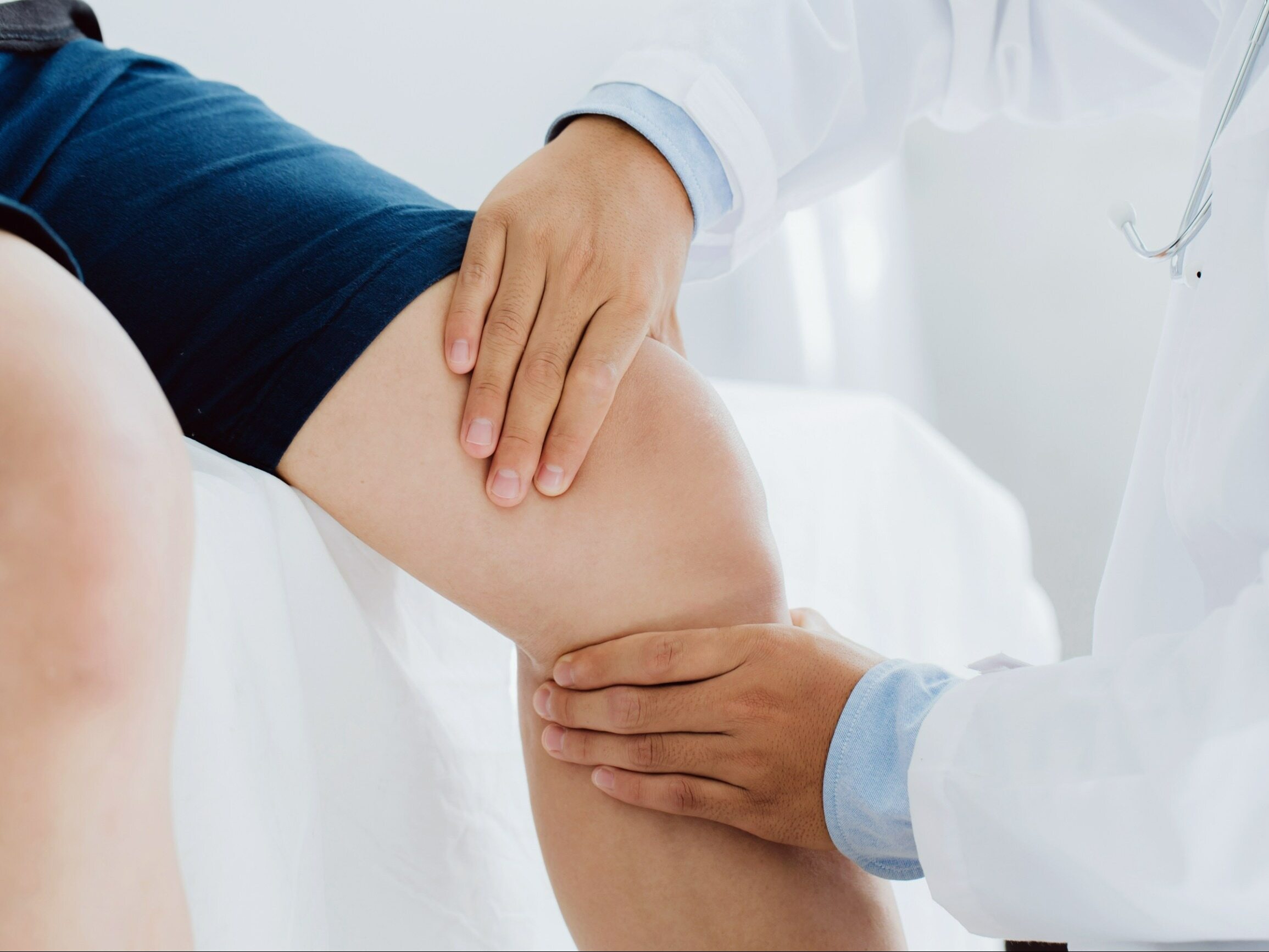Water in the knee (knee joint effusion) – causes, symptoms, treatment

“Water in the knee” is the commonly used name for effusion in the knee joint, which is a pathological condition that is troublesome and limits daily functioning. We explain the most common causes of the so-called water in the knee? What symptoms does this type of effusion cause? We explain.
- What is water in the knee and where does it come from?
- Water in the knee – the most common causes
- What are the symptoms of water in the knee?
- Home remedies for water in the knee
- Treatment of water in the knee
Water in the knee, or effusion in the knee joint, occurs as a result of excessive fluid accumulation in the joint capsule. One of the common causes of water in the knee is inflammation resulting from an injury to the knee joint or a chronic disease. When it occurs, the synovial membrane in the joint capsule produces too much synovial fluid, which penetrates into the joint. Water in the knee may be indicated by swelling and pain in the knee that makes movement difficult or impossible. It is worth learning more about the causes, symptoms and treatment of water in the knee, as well as home remedies for fluid in the knee.
What is water in the knee and where does it come from?
The knee joint is one of the largest joints in the human body. It connects the femur with the tibia, enabling flexion and extension of the lower limb as well as limited rotational movements. The knee joint is supported by stabilizing ligaments, including: anterior cruciate ligament. The knee joint is not only one of the largest joints in the human body, but also the most exposed to overload. Mechanical injuries, contusions, as well as degenerative changes related to excessive overload increase the risk of developing inflammation and symptoms of exudative knee arthritis.
The name “water at the knee” cannot be found in medical literature. This is a commonly used term that refers to effusion in the knee joint. An effusion occurs when, as a result of inflammation, fluid accumulates in the tissues and body cavities. Exudate appears in the course of many diseases and may be of different nature (e.g. serous exudate, purulent exudate). The accumulation of fluid in the knee joint causes characteristic symptoms, including: swelling around the kneecap.
Excessive production of synovial fluid that accumulates in the knee is diagnosed relatively often. The pain caused by water in the knee is so troublesome that it is rarely underestimated. This is related to the functions of the knee joints – thanks to healthy knee joints, you can move freely and enjoy physical activity. The effusion causes limited joint mobility, swelling and pain that make movement difficult. Symptoms related to effusion may also occur in other joints, e.g. the elbow joint.
Physically active people often suffer from effusion in the knee joint. Water in the knee is a troublesome problem for professional athletes and amateurs practicing sports disciplines that result in excessive load on the knee joint and contribute to the occurrence of injuries.
Water in the knee is an indication to visit a specialist who will detect the causes of the effusion and start appropriate treatment.
Water in the knee – the most common causes
Injuries, contusions, as well as various diseases of the knee joint and the bones connecting it may result in the appearance of symptoms of water in the knee. The most common causes of synovial fluid accumulation in the knee include:
-
various types of injuries – a blow to the knee, a fall on the knee or other mechanical trauma that leads to damage to the structures of the knee joint (e.g. joint capsule), causing inflammation;
-
strain of the knee joints as a result of intense sports, physical work, standing work, as well as overweight and obesity;
-
degenerative processes related to old age and micro-injuries of the knee joint, e.g. osteoarthritis and degenerative damage to articular cartilage;
-
autoimmune diseases that cause inflammation in the knee joint, e.g. rheumatoid arthritis, as well as osteoarthritis of other causes;
-
torn anterior cruciate ligament;
-
bone fractures;
-
bursitis (inflammation of the joint capsule);
-
infections;
-
cancerous changes.
Overload of the knee joint, degenerative diseases, as well as injuries and contusions most often cause fluid accumulation in the knee joint. Less commonly, water in the knee is related to, among others, with autoimmune diseases, cancer, and other pathological changes in the knee joint, e.g. cysts.
What are the symptoms of water in the knee?
Symptoms of effusion in the knee joint include:
-
knee redness,
-
severe knee pain,
-
feeling of heat in the knee accompanied by warming of the skin,
-
limited mobility of the knee joint,
-
crackling in the joint,
-
feeling of instability and knee “running away”.
The occurrence of pain accompanied by swelling and redness of the knee may also indicate other diseases – such symptoms are caused by, for example, gout. In order to detect the cause of pain, swelling and limited mobility of the knee joint, it is worth consulting a specialist as soon as possible.
Home remedies for water in the knee
Water in the knee is a serious health problem that cannot be solved using only home remedies. Home treatments can be used temporarily to alleviate unpleasant symptoms. These include, for example, cold compresses of cabbage leaves, the use of analgesic and anti-inflammatory ointments, as well as the use of herbs and medicinal plants, e.g. comfrey, calendula ointment and ichthyol ointment. To alleviate pain related to water in the knee, do not use warm compresses or warming ointments. Home remedies for water in the knee should not be used for more than a few days. If the symptoms do not subside or worsen, you should consult a doctor.
During treatment, physical activity should be limited to the minimum necessary and the affected knee should be relieved.
Treatment of water in the knee
How to get rid of water in the knee? A joint puncture may be necessary to remove excess fluid in the knee. The procedure is performed when symptomatic treatment does not bring the expected results or the fluid in the knee needs to be examined, e.g. for the presence of pathogens. The procedure is performed under local anesthesia and involves removing excess synovial fluid using a syringe. In some cases, in addition to examining the synovial fluid, other tests are also performed, e.g. magnetic resonance imaging.
Sources:
-
EJ Kucharz,A. Kuryliszyn-Moskal, P. Wiland, A. Mastalerz-Migas, K. Sudoł, R. Jabłoński, Diagnostic algorithm for knee osteoarthritis – recommendations for family doctors, Primary care physician, 4/2021 vol. 7
-
A. Bochenek, M. Reicher, Human anatomy, PZWL Medical Publishing House, Warsaw, 2016
-
D. Kusz, Compendium of orthopedics, PZWL Medical Publishing House, Warsaw, 2015






